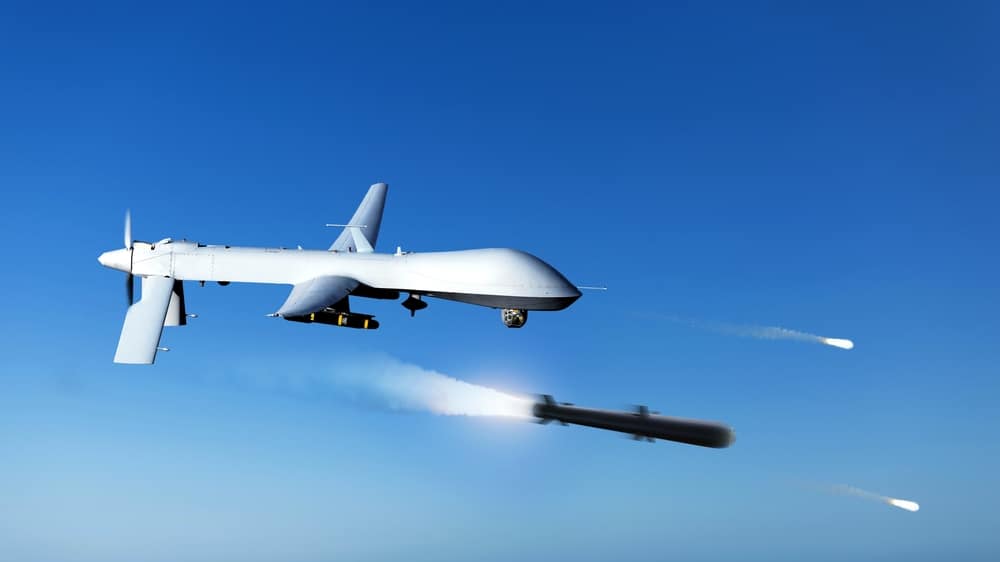Pentagon planners worried about the increasing threat from drones have looked at everything from mesh nets and missiles to cannons and lasers, but now a once highly-classified technology is attracting more attention and funding.
High-power microwave devices that can disrupt or even fry the electronics of aerial threats—such as drones and missiles—are moving to the forefront of defense strategies after years of development. In theory, microwave systems offer the ability to keep firing for as long as they have power, which could help take down a swarm of drones.
The stakes for developing such technologies are high: The relatively low cost of small drones has increasingly made them the weapon of choice for less sophisticated armies, terrorists, and militant groups trying to overwhelm or slip through defense systems. Hamas has used suicide drones to attack Israel, and the Houthis have been launching drones from Yemen over the Red Sea.
Last week, a U.S. Navy destroyer shot down 14 Houthi drones. The Houthi attacks prompted the U.S. on Monday to unveil a multinational naval force to protect merchant vessels in the Red Sea.
Even more-advanced military forces are using suicide drones, as Russia has done launching Iranian-made unmanned aerial vehicles to target Ukraine’s infrastructure. Russia’s use of suicide drones prompted the U.S. to accelerate its search for new technologies to counter them.
Pentagon officials have said in recent weeks that they want production of counterdrone defenses stepped up dramatically, a recognition that firing multimillion-dollar missiles to down swarms of cheap flying bombs isn’t a tenable strategy.
Technologies like “directed energy, high powered microwave, low-cost interceptors is where we want to be,” Army Maj. Gen Sean Gainey, who heads an office looking at ways to develop defenses against small drones, said last month at the Washington-based Center for Strategic and International Studies.
The Raytheon unit of RTX on Tuesday said it had secured a three-year deal to design, build and test two high-power microwave systems for the Navy and the Air Force, with the first prototypes scheduled for delivery next year. And last month, Los Angeles-based Epirus delivered the first of four prototypes of its Leonidas microwave system to the Army.
Those looking for ways to defend against drones said recent events have added urgency to finding and fielding cost-effective defenses.
“We’ve arrived at a bit of a moment,” said Ken Bedingfield, until recently chief executive of Epirus and now finance chief at L3Harris Technologies.
No one technology can defeat every drone, given the ubiquity and variety of drones in use around the world. Even defining the threat itself can be difficult: Those working in the field often disagree on how many drones constituted a swarm, which could range from just a few to dozens or more.








